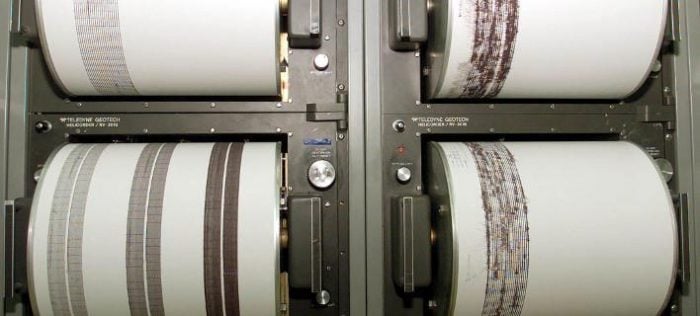
Japan has issued a major tsunami warning after a series of strong earthquakes. The quakes hit Ishikawa and nearby prefectures, with one having a preliminary magnitude of 7.6, according to the Japan Meteorological Agency.
It issued a major tsunami warning for Ishikawa and lower-level tsunami warnings or advisories for the rest of the western coast of the island of Honshu.
【視聴注意】
『津波てんでんこ』のヤバさがわかる動画言っちゃ悪いが、津波の時は自分の事だけ考えて逃げるしかない。人助けなど考える余地もない。石川県能登の皆様、今すぐ高い場所に逃げてください。#Japan #earthquake #HappyNewYear pic.twitter.com/YAky4sDucX
— Waqasmughal (@WAQASMmughall) January 1, 2024
Waves of up to 5m high are believed to be reaching Noto in Ishikawa, according to the meteorological agency.
Breaking News:#JAPAN has been hit with massive 7.6 EARTHQUAKE !
Evacuations orders and tsunami warnings have been issued.#Earthquake #japan #Tsunami pic.twitter.com/rdX2kfGfEL
— Aajiz Gayoor (@AajizGayoor) January 1, 2024
Japanese broadcaster NHK urged people to flee to high ground or the tops of nearby buildings as quickly as possible.
NHK warned tsunami waves could keep returning and warnings were continuing to be broadcast nearly an hour after the initial alert.
Tsunami is the scariest thing #earthquake #Japan pic.twitter.com/ik2FKNBYdG
— 伯金 • Беркин • ברקין • Bеrkin (@B2RKN) January 1, 2024
A tsunami nearly 3m high was expected to hit Niigata and other prefectures on the western coast of Japan.
Japan’s Prime Minister Fumio Kishida urged local residents to evacuate immediately following the earthquake.
Japan – This is footage of the earthquake filmed by a terrified family. Japan have issued an urgent evacuation notice on the western coast as part of a tsunami warning
pic.twitter.com/ETm1VLrJth
—
RonEnglish
(@RonEng1ish) January 1, 2024
A spokesperson for the Japanese government said at an emergency press conference that authorities were still checking the extent of the damage and warned residents to prepare for possible further quakes.
More than 36,000 households lost power in Ishikawa and Toyama prefectures, utilities provider Hokuriku Electric Power said.
There were no irregularities at any of Japan’s nuclear power plants following the earthquake, Japan’s chief cabinet secretary, Yoshimasa Hayashi, said.
South Korea also warned the sea level in some areas along the east coast may rise after the earthquake.
Japan is extremely prone to earthquakes. In March 2011 a major quake and tsunami caused meltdowns at the Fukushima nuclear power plant.
Japan 2011 earthquake and tsunami
On 11 March 2011 a 9.0–9.1 undersea megathrust earthquake occurred in the Pacific Ocean, 72 km (45 mi) east of the Oshika Peninsula of the Tōhoku region.
It lasted approximately six minutes, causing a tsunami. It is sometimes known in Japan as the “Great East Japan Earthquake”.
It was the most powerful earthquake ever recorded in Japan, and the fourth most powerful earthquake recorded in the world since modern seismography began in 1900.
The earthquake triggered powerful tsunami waves that may have reached heights of up to 40.5 meters (133 ft) in Miyako in Tōhoku’s Iwate Prefecture, and which, in the Sendai area, traveled at 700 km/h (435 mph) and up to 10 km (6 mi) inland.
Residents of Sendai had only eight to ten minutes of warning, and more than a hundred evacuation sites were washed away.
The official figures released in 2021 reported 19,759 deaths, 6,242 injured, and 2,553 people missing, and a report from 2015 indicated 228,863 people were still living away from their home in either temporary housing or due to permanent relocation.
